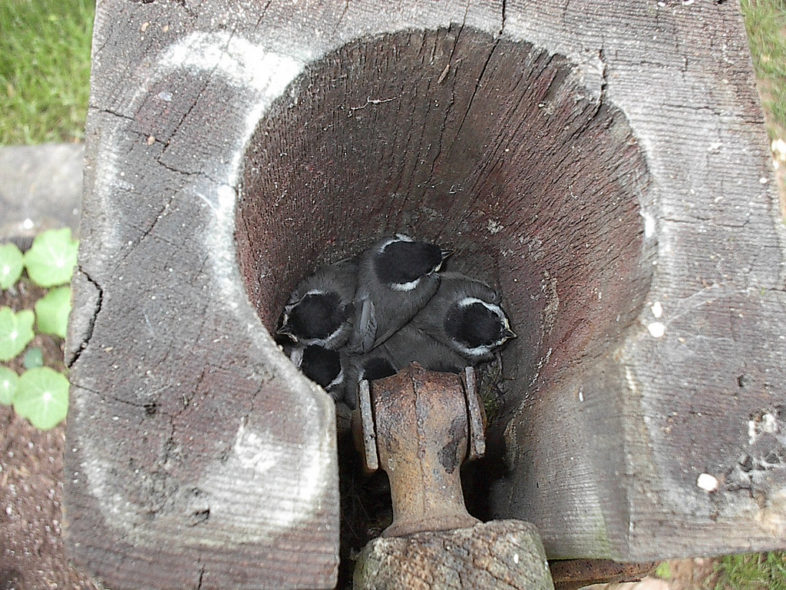The idyllic setting for nesting songbirds in our backyards is one filled with native plants, according to research published last summer in Biological Conservation. Desirée Narango, a graduate student at the University of Delaware and lead author of the study, found that yards with more native trees and shrubs have more Carolina Chickadees, southern cousins to Black-capped Chickadees.
During several summers, Narango and her colleagues from the University of Delaware and the Smithsonian Migratory Bird Center studied Carolina Chickadee abundance, foraging behavior, breeding territory selection, and counted caterpillars in Washington, D.C. backyards. They found that, compared to non-native plants, native trees and shrubs had far more caterpillars, the primary food source that chickadees feed their young. More caterpillars meant chickadees were more likely to breed in backyards where more native plants were growing.
“Homeowners can improve their yards for breeding birds by choosing trees and shrubs that host the most caterpillars. Native plants tended to provide the most caterpillar prey and were highly preferred for foraging when chickadees were feeding young,” said Narango.
Each year our suburban areas are taking over more and more land. But the good news is that we can all help nesting songbirds one yard at time. Using a tree and shrub host plant database, the authors, with the National Wildlife Federation, have created a new tool that shows how many caterpillars different plants support from your zip code that helps you select native plants to grow. Additionally, you can join the Habitat Network — a project from the Cornell Lab of Ornithology and The Nature Conservancy — where you can map your yard and learn and share tips on how to attract wildlife.
Reference: Narango, D. L., D. W. Tallamy, and P. P. Marra. 2017. Native plants improve breeding and foraging habitat for an insectivorous bird. Biological Conservation 213:42-50.


Great photo!
nice foto